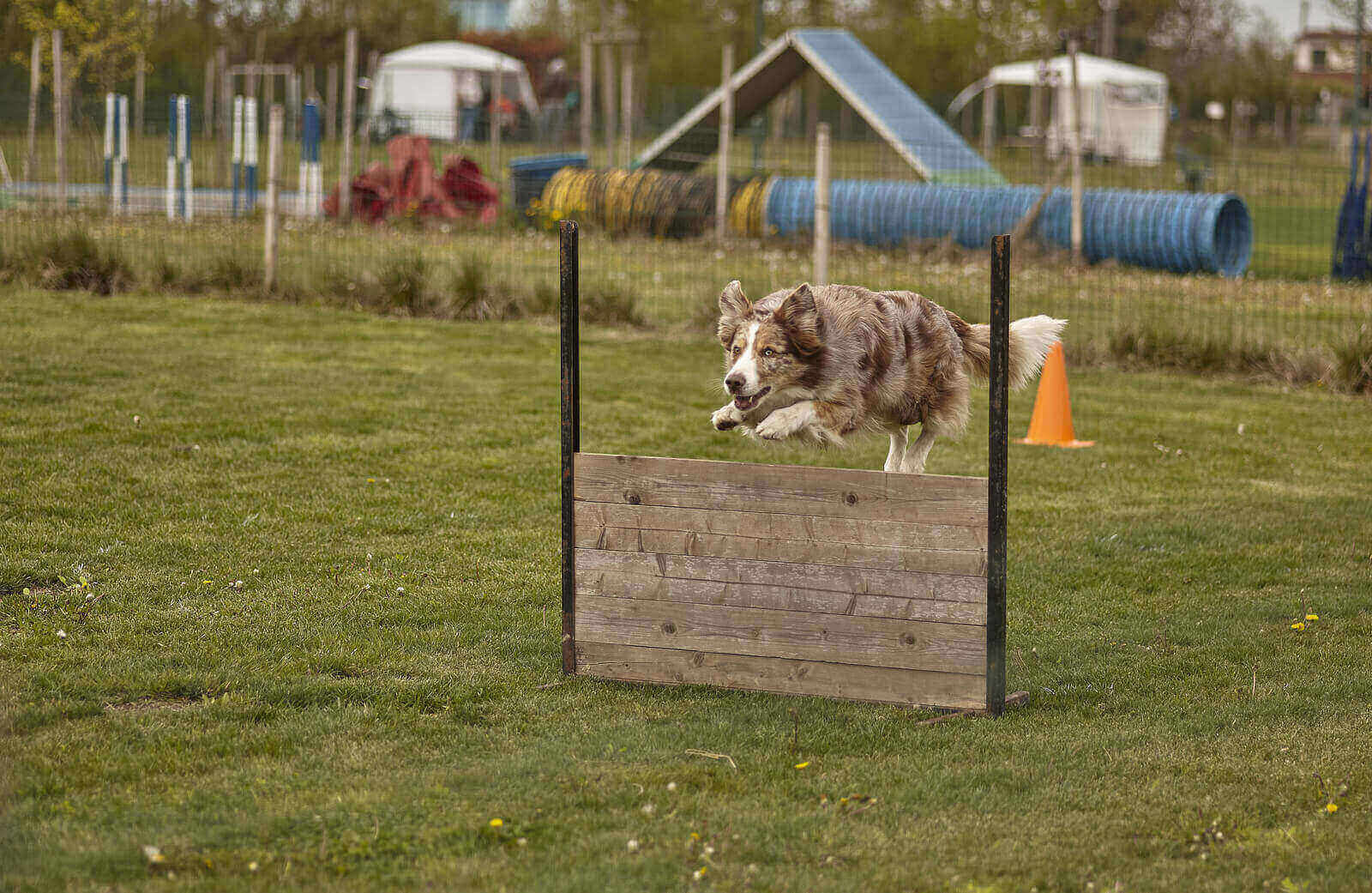Upon noticing that your dog has a cut, scrape or another open injury, you may be tempted to apply Bactine on it. This is because Bactine is said to be not only capable of reducing chances of infection but it also offers some pain relief. Yet before proceeding to actually apply the Bactine, you (as a responsible dog parent) will probably find yourself trying to figure out whether it is appropriate.
Can you use Bactine on dogs? Well, Bactine is actually quite safe for dogs. But it is important to understand that one of the components in Bactine is Licodaine. And if too high levels of it are absorbed through the skin, they can be risky and perhaps even lethal, both for dogs and humans.

In this article, we explore that issue – of whether or not it is proper to use Bactine on dogs.
What Is Bactine?
Before proceeding to answer the can you use Bactine on dogs question, it is important to first understand what exactly the Bactine is. As it turns out, Bactine is simply an antiseptic. It is in the category of topical antiseptics. This is to say that it is applied on the skin, directly on the spot where there is an injury. Being an antiseptic means that it reduces chances of infection. As such, it can be helpful at keeping a wound from getting worse.
There are two main ingredients in Bactine: Benzalkonium Chloride and Licodaine. It is the Benzalkonium Chloride that is responsible for the antiseptic effect. The Licodaine, on the other hand, is actually an anesthetic agent. It therefore serves the purpose of numbing the spot where there is an injury (for a short period of time). This translates into relief from pain and itching.
Can You Use Bactine On Dogs?
In answering the can you use Bactine on dogs question, there are two aspects we need to pay attention to. Firstly, we need to find out, is Bactine safe for dogs? Or is Bactine toxic to dogs? Secondly, we need to find out whether Bactine can be useful to dogs.
Only upon figuring out those two things (safety and efficacy) would we be in a position to answer the can you use Bactine on dogs question.
With regard to the safety aspect, it emerges that Bactine is quite safe to dogs. The key ingredients in it, Benzalkonium Chloride and Licodaine are substances that dogs are able to tolerate well.
That is unless a dog happens to absorb them in too high quantities (above 20 mg per pound of dog body weight). In that case, these ingredients can be toxic. But for normal topical applications, the ingredients in Bactine are quite safe for dogs.
Thus, it is a reasonably dog friendly antiseptic. With regard to usefulness, the reality is that Bactine has a decent antiseptic effect. It can keep dog injuries (like cuts, scratches and scrapes) from getting infected. And the Licodaine in it also provides considerable pain relief.
So, knowing that it is both safe and effective, can I use Bactine on my dog? Absolutely. Admittedly, Bactine is primarily marketed as a human antiseptic cream. And the idea of using human antiseptic cream for dogs may initially feel somewhat wrong. But given its efficacy and safety, Bactine is definitely something you can use on dogs with confidence.
Can You Use Bactine Spray On Dogs?
To put it differently, can you spray Bactine on dogs? The answer is yes, you can use Bactine spray on dogs. Just like the Bactine cream, the spray has two key ingredients: Benzalkonium Chloride and Licodaine. Both are quite safe for dogs. And both are useful in treating minor dog wounds. That is where Benzalkonium Chloride helps to prevent infection, while Licodaine helps with pain relief.
Applying the Bactine spray may be less messy than applying the cream. This is what makes Bactine spray for dogs more preferable to some people.
Therefore, if you have been wondering, what can I use on my dogs cuts, now you have an answer. Bactine spray can be quite useful in that regard.
Still, it is important to point out that the initial spray of Bactine does sting. Thus, for instance, when you spray Bactine on dog hot spot, you should anticipate that the dog will initially show some discomfort.
So there is some stinging effect. But it is not as bad as, say, the one that we see in peroxide. People who pose the can I use peroxide on my dog question are typically advised to expect a great deal of stinging. Bactine spray (or cream) also stings, but not as much.
Can You Use Bactine On Dogs Ears?
To put it differently, is Bactine safe for dogs ears? Well, if the injuries are on an ear’s outer side, then it is proper to use Bactine. But if the injuries are on the ear’s inner side, then one may hesitate to use Bactine. This is because Bactine is only for topical use (external use) only.
It may be worthwhile to consult your vet before applying Bactine on the inner part of the dog’s ear. Or the vet may recommend something better for that use.
Can You Use Bactine Max On Dogs?
What sets Bactine max apart from regular Bactine is the Licodaine content. Bactine max has 4% Licodaine. The regular formulation has 2.5% Licodaine. Bactine max offers faster pain relief, thanks to the higher Licodaine content.
Licodaine, even at 5%, is tolerable for dogs. Therefore Bactine max, with 4% Licodaine, is still within the tolerable limit for dogs. But if a dog absorbs too much of it through the skin, there may be toxicity.

Can You Use Bactine On A Dog’s Wound?
Should you notice that your dog has a wound, then remember that you have some Bactine in the house, you may wonder whether you can actually use the Bactine on the dog’s wound. So, can you use Bactine on dogs wounds? The answer is ‘yes’. Bactine is safe to use on dog’s wounds. And it is effective both at preventing infection and reducing pain.
Therefore if you have been trying to figure out what is safe to use on dog wounds, now you have an answer: Bactine is one of the useful treatments. But Bactine can be harmful if the dog licks it.
Therefore once you apply it to a dog wound, you may consider bandaging the spot lightly, so that the dog isn’t able to lick it. Or you may consider putting an e-collar on the dog, to prevent licking.
The good thing about Bactine though is the fact that it has a taste which dogs find unpleasant. Therefore even if my dog licked Bactine that was applied on a wound once, I wouldn’t be too concerned. This is because the dog is likely to find the Bactine’s taste unpleasant. And that is in turn likely to cause him not want to lick again.
All said and done, can you put Bactine on a dog wound? The answer is yes. Bactine has a decent safety and efficacy profile to warrant its usage on dog wounds.
Can I Use Benzalkonium Chloride On My Dog?
Benzalkonium chloride is one of the two main ingredients in Bactine. Some of the people who pose the can you use Bactine on dogs question turn out to be folks whose main concern is the Benzalkonium Chloride component.
As it turns out, Benzalkonium chloride is effective at preventing dog injuries from becoming septic. And it is safe for dogs. In a nutshell, it is an antiseptic – and it has all the qualities that make an antiseptic safe for dogs.
Because Benzalkonium Chloride is both effective and safe, it is suitable for use on dogs.
Actually, though most people worry about Benzalkonium Chloride, it is the Licodaine in the Bactine that should be more cause for concern. This is because it is the Licodaine that has greater potential to cause toxicity.
Can You Spray Bactine On Dogs?
Well, if the dogs have minor injuries, and you want to prevent infections/complications (while also providing pain relief), then you can spray Bactine. Just ensure that the Bactine spray doesn’t get into the dog’s mouths, eyes or noses. Remember, it is for topical use only.
Therefore, if you have been having the can Bactine be used on dogs question (if it is in spray form), now you have an answer. It is proper to use it. Just ensure that it doesn’t get into the dogs’ mouths, eyes or noses.
Further, before spraying Bactine on dogs’ injuries, you may need to first clean the areas with the injuries. The idea is to remove any dirt or debris that may be there. Only after doing this can you proceed to spray the Bactine.
Is It Safe To Use Bactine On Dogs?
Most of the people who pose the can you use Bactine on dogs question are mainly driven by safety concerns. So, is it safe to use Bactine on dogs? The answer is ‘yes’. It is safe. The key ingredients in Bactine, namely Benzalkonium Chloride and Licodaine are well tolerated by dogs. Therefore Bactine, which comes from those two ingredients, is quite safe.
But the fact that Bactine is safe for dogs doesn’t necessarily make it safe for all pets. For instance, while Bactine usage for dogs may be safe, Bactine for cats can be somewhat riskier.
Further, it is imperative to understand that Bactine is only safe for dogs when it comes to topical application. If a dog happens to eat lots of Bactine, the consequences may be dire. (Thankfully, Bactine’s unpleasant taste may make this unlikely). But even for topical applications, if big enough quantities of it are absorbed through the skin, toxicity may result.
On another note, it is worth appreciating that Bactine application may cause a stinging sensation. So this is one of the things to anticipate, while applying it on a dog. Once the dog experiences the stinging sensation, he may become rather aggressive – at least for that short while.
What Antiseptic Can I Use On My Dog?
While trying to find answers to the can you use Bactine on dogs question, you may be interested in identifying other safe antiseptics for dogs. Besides Bactine, for instance, you may also wonder: can you put Neosporin on a dog? Or can you use Polysporin for dogs?
It emerges that besides Bactine, there are several other antiseptics you can use on your dog. Neosporin is one good example of another antiseptic you can use on a dog. So is Polysporin. Bacitracin can also be useful. But then again, it is always ideal to first consult your vet before using many of these formulations on your dog.
There are antiseptic formulations that are designed specifically for dogs. Those are better than the human antiseptics.
Whichever antiseptic you are using, it will be ideal to first clean the area where there is an injury. So you start by clipping the hair around the area. Then you clean it, to remove any debris or dirt that is in the area. Only then can you proceed to actually apply the antiseptic. Then perhaps bandage the area lightly, to keep the dog from licking.
Final Verdict – Can You Use Bactine On Dogs?
As we have seen, Bactine is quite safe to use on dogs. And it has good efficacy: both in antiseptic terms and at providing temporary pain relief. Nonetheless, you have to use it sparingly, knowing that it can be toxic if too much of it is absorbed into the dog’s bloodstream through the skin.

Before applying Bactine on an injured spot, it is important to first clean the spot properly. If your dog shows signs of toxicity after Bactine use, it is ideal to consult a vet immediately.

Welcome to Learn About Pet. My name is Rajkumar Ravichandran and I love all pets, travel, and amazing food. I write about my passion and personal experience caring for multiple pets in this blog! ❤️
Post Disclaimer
DISCLAIMER: THIS BLOG OR WEBSITE, "Learn About Pet", DOES NOT PROVIDE YOU WITH MEDICAL ADVICE AND IS NOT A SUBSTITUTE FOR MEDICAL ADVICE. ALWAYS GET IN TOUCH WITH YOUR PERSONAL VETERINARIAN AND USE INFORMATION HERE AS GENERAL ADVICE.
The information, including but not limited to, text, graphics, images and other material contained on this website are for informational purposes only. No material on this site is intended to be a substitute for professional veterinary advice, food recommendation, diagnosis, or treatment. Always seek the advice of your veterinarian or other qualified health care provider with any questions you may have regarding a medical condition or for pet food related questions.







